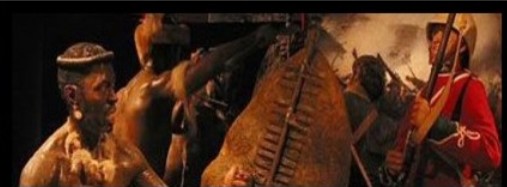| Latest topics | » The Pictorial World - March 15th 1879 Yesterday at 1:13 pm by ben2000 » The lost diary of Pvt James Owen Thu Jul 25, 2024 12:03 pm by miklew » Last of the 24th at Isandhlwana Wed Jul 24, 2024 6:16 pm by John Young » What was the uniform of field marshals/generals in the zulu war? Mon Jul 22, 2024 6:53 am by John Young » Henderson and the NNH at Rorke's Drift  Sat Jul 20, 2024 12:17 pm by SRB1965 » Capt. D. Hayes 1/3rd Regt., NNC Thu Jul 18, 2024 11:11 am by Julian Whybra » The Wrecked Camp Wed Jul 17, 2024 4:33 pm by Julian Whybra » Private N/N John Robert Branch 90th Regiment and his discovered diary Mon Jul 15, 2024 8:53 pm by 1879graves » Private John Scott 24th Regiment a fugitive at large Sun Jul 14, 2024 12:06 pm by 1879graves » 90th foot sgt T. Collins 214 Sun Jul 14, 2024 10:57 am by johnman » Baron Von Steitencron Wed Jul 10, 2024 3:10 pm by Julian Whybra » Sgt Joseph Windridge, Defender of Rorke's Drift - Memorial Tue Jul 09, 2024 3:15 am by 90th » Writing advice Sun Jul 07, 2024 4:04 pm by Julian Whybra » South Africa 1877-79, 1 clasp, 1877-8-9 (4389 Fr. Sergt. S. Smith. O/2. Bde. R.A.) Sun Jul 07, 2024 9:30 am by rai » The trashing of the Zulu monument to the brave warriors at Isandlawana March 12, 2024 has been blamed on scrap metal scavengers. Thu Jul 04, 2024 7:41 pm by ADMIN» The Goodwill Zulu Festival: Celebrating the Welsh and KwaZulu Natal Shared Heritage. Thu Jul 04, 2024 7:27 pm by ADMIN» Any nominal role of G Coy 2/24th regiment  Thu Jul 04, 2024 11:18 am by Wayne » Bassage Diary Thu Jul 04, 2024 9:31 am by Julian Whybra » Prior to Sihayo's Kraal  Thu Jul 04, 2024 9:19 am by 90th » British Fort Locations Thu Jul 04, 2024 3:40 am by 90th » Sergeant 1064 Tom Hick / Hicks G Company 2/24th Regiment Wed Jul 03, 2024 11:05 am by Julian Whybra » A Hungarian soldier in the Zulu War (?) Fri Jun 28, 2024 2:31 pm by Mr M. Cooper » Private 25B/279 Henry Sears Bugler E Company 24th Reg. KIA Isandlwana Thu Jun 27, 2024 1:07 pm by gardner1879 » Hamilton Browne's birthday Fri Jun 21, 2024 9:22 am by Julian Whybra » Zulu "Corps" Thu Jun 20, 2024 6:01 pm by Hobbes » Army Pay Department Personnel Thu Jun 20, 2024 11:49 am by Julian Whybra » Ntshingwayo birth date Sun Jun 16, 2024 11:37 am by Hobbes » Zibhebhu and Cetshwayo's family Wed Jun 05, 2024 9:11 pm by Julian Whybra » Smith's Store/Hotel Wed Jun 05, 2024 6:06 pm by Julian Whybra » Corporal James Frowen Williams F Company.  Tue Jun 04, 2024 5:20 pm by Julian Whybra » Shaka iLembe Sat Jun 01, 2024 1:27 pm by Jon84 » Bugler 1415 Thomas Finn / Flin 90th Regiment  Sat May 25, 2024 11:28 am by johnman » Inspector-General Evelyn Richard Hugh Pollard Tue May 14, 2024 10:13 am by ADMIN» Alfred Fairlie Henderson photographs. Sat May 11, 2024 8:01 am by Julian Whybra » Fairlie's Native Police Thu May 02, 2024 9:12 pm by Hobbes |
| July 2024 | | Mon | Tue | Wed | Thu | Fri | Sat | Sun |
|---|
| 1 | 2 | 3 | 4 | 5 | 6 | 7 | | 8 | 9 | 10 | 11 | 12 | 13 | 14 | | 15 | 16 | 17 | 18 | 19 | 20 | 21 | | 22 | 23 | 24 | 25 | 26 | 27 | 28 | | 29 | 30 | 31 | | | | |  Calendar Calendar |
|
| Top posting users this month | |
| New topics | » The Pictorial World - March 15th 1879 Yesterday at 1:13 pm by ben2000 » The lost diary of Pvt James Owen Thu Jul 25, 2024 12:03 pm by miklew » Last of the 24th at Isandhlwana Wed Jul 24, 2024 5:53 pm by miklew » What was the uniform of field marshals/generals in the zulu war? Sun Jul 21, 2024 12:30 pm by darthvaix » Henderson and the NNH at Rorke's Drift  Fri Jul 19, 2024 1:29 pm by SRB1965 » Capt. D. Hayes 1/3rd Regt., NNC Wed Jul 17, 2024 10:52 pm by Julian Whybra » The Wrecked Camp Sun Jul 14, 2024 8:51 am by 61MECH » The trashing of the Zulu monument to the brave warriors at Isandlawana March 12, 2024 has been blamed on scrap metal scavengers. Thu Jul 04, 2024 7:41 pm by ADMIN» The Goodwill Zulu Festival: Celebrating the Welsh and KwaZulu Natal Shared Heritage. Thu Jul 04, 2024 7:27 pm by ADMIN |
| Zero tolerance to harassment and bullying. | |
Due to recent events on this forum, we have now imposed a zero tolerance to harassment and bullying. All reports will be treated seriously, and will lead to a permanent ban of both membership and IP address.
Any member blatantly corresponding in a deliberate and provoking manner will be removed from the forum as quickly as possible after the event.
If any members are being harassed behind the scenes PM facility by any member/s here at 1879zuluwar.com please do not hesitate to forward the offending text.
We are all here to communicate and enjoy the various discussions and information on the Anglo Zulu War of 1879. Opinions will vary, you will agree and disagree with one another, we will have debates, and so it goes.
There is no excuse for harassment or bullying of anyone by another person on this site.
The above applies to the main frame areas of the forum.
The ring which is the last section on the forum, is available to those members who wish to partake in slagging matches. That section cannot be viewed by guests and only viewed by members that wish to do so. |
| Fair Use Notice | | Fair use notice.
This website may contain copyrighted material the use of which has not been specifically authorised by the copyright owner.
We are making such material and images are available in our efforts to advance the understanding of the “Anglo Zulu War of 1879. For educational & recreational purposes.
We believe this constitutes a 'fair use' of any such copyrighted material, as provided for in UK copyright law. The information is purely for educational and research purposes only. No profit is made from any part of this website.
If you hold the copyright on any material on the site, or material refers to you, and you would like it to be removed, please let us know and we will work with you to reach a resolution. |
| | | Captain HUGH O'DONNELL. |  |
|
+590th Dave tasker224 impi littlehand 9 posters | | Author | Message |
|---|
littlehand
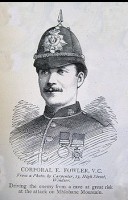
Posts : 7076
Join date : 2009-04-24
Age : 55
Location : Down South.
 |  Subject: Captain HUGH O'DONNELL. Subject: Captain HUGH O'DONNELL.  Thu Apr 18, 2013 9:50 pm Thu Apr 18, 2013 9:50 pm | |
| "O'DONNELL, HUGH, Captain, was born 9 February 1858, at Jubbulpore, Central Provinces, India, son of John Walter O'Donnell, CE, PWD, and Rosabella O'Donnell. He was educated privately in Germany; at Streatham School, and at the Royal Military College, Sandhurst, and began his military career 30 January 1878, as an Ensign in the 1st Battalion 8th King's Regiment In the following year he volunteered for active service in the Zulu War, and joined the 24th Regiment. He received the South African Medal and clasp, and received a letter of thanks from the War Office through the Quartermaster-General from HRH Commanding-in-Chief: "For a sketch made by order of OC detachment of 24th Regiment of the track taken by the fugitives from Isandlwhana, 1879, from which information was gained". In July 1880, he entered the Bengal Staff Corps, and was posted to the 44th Gurkha Rifles, and was successively Quartermaster and Adjutant of that regiment, In August 1886, he received orders to raise a Police Levy for service in Burma, and in January 1887, was appointed Commandant of Military Police for Upper Burma, and held this appointment from then to 1891. He was with the Mogoung Field Force, 1887-88, and commanded it (under Brigadier General G B Wolseley, CB), 1888-89, for which he received mention in Despatches and the thanks of the Government of India; and was in the Tonhon Expedition of 1889-90, and with the Wuntho Field Force, 1891. He was mentioned in Despatches by Sir George White, KCB, VC: "For his conduct while in command of the Column operating against the rebellious Kachin tribes round and beyond Mogoung; "received the Burmese Medal with three clasps, and was created a Companion of the Distinguished Service Order [London Gazette, 12 November 1889]: "Hugh O'Donnell, Captain, Bengal Staff Corps. In recognition of services during operations in Burma". In 1892 he rejoined his old regiment, the 44th Gurkha Rifles, as Major and Second in Command. In 1899 he was transferred, as Commandant of the 42nd Gurkha Rifles. In 1904 he returned to his old regiment, the 44th Gurkha Rifles, now renamed the 6th Gurkha Rifles, as Commandant, and was granted a year's extension and appointed AAG, 1st Peshawar Division, then AAG for musketry to the Northern Army from 1907 to 1910. At the end of that period he again got another extension for a year, and was appointed Colonel on the Staff; and later Brigadier General Commanding Bannu Brigade, North-West Frontier, January 1911, receiving in the same year the commendation of the Commander-in-Chief on his successful operations against the Britiani Khels, and later against the Hathi Khels. He was Brigade Commander, January 1912, Major General, Bannu Brigade, April 1912. He received a letter signifying the full approval from the Commander-in-Chief of the operations of the Bannu Movable Column in the Tochi Valley in April 1913. At the Coronation Durbar at Delhi he commanded the 20th Brigade, and was invested with the CB at the Durbar by the King in person. In 1913 he was made Colonel, 6th Gurkha Rifles. In the Great War he commanded the Bannu Movable Column in the field in successful operations against Khostwal tribesmen, and at Spina Khaisora the enemy was driven over the frontier. After these operations the Viceroy and Commander-in-Chief commended the able manner in which they were carried out by General O'Donnell. Three weeks later, in February 1915, General O'Donnell was suddenly taken ill, from exposure in very inclement weather while with the Column. He, was put on sick leave, arriving in England in April 1916. Although he greatly improved in health, he never became fit for active service, and failed to be accepted when he offered to work in any capacity during the War. His death occurred unexpectedly in December 1917, while on a visit to friends at Cromhall, Gloucestershire. He was buried at Halton, Lancashire. He had a strong and commanding personality, and his profession was his supreme interest in life. He was an enthusiast at cricket, a fine tennis and billiard player, also a photographer in his spare time. He married, in 1894, Susan, daughter of T G Garnett, JP, of Shefferlands, Halton, Lancashire. She and their only son died in 1908.
Source: DSO recipients (VC and DSO Book)" |
|   | | impi

Posts : 2308
Join date : 2010-07-02
Age : 44
 |  Subject: Re: Captain HUGH O'DONNELL. Subject: Re: Captain HUGH O'DONNELL.  Thu Apr 18, 2013 11:36 pm Thu Apr 18, 2013 11:36 pm | |
| - Quote :
- He received the South African Medal and clasp, and received a letter of thanks from the War Office through the Quartermaster-General from HRH Commanding-in-Chief: "For a sketch made by order of OC detachment of 24th Regiment of the track taken by the fugitives from Isandlwhana, 1879, from which information was gained".
What kind information do you think was gained by this Sketch. |
|   | | tasker224

Posts : 2101
Join date : 2010-07-30
Age : 57
Location : North London
 |  Subject: Re: Captain HUGH O'DONNELL. Subject: Re: Captain HUGH O'DONNELL.  Fri Apr 19, 2013 6:17 pm Fri Apr 19, 2013 6:17 pm | |
| |
|   | | Dave

Posts : 1603
Join date : 2009-09-21
 |  Subject: Re: Captain HUGH O'DONNELL. Subject: Re: Captain HUGH O'DONNELL.  Fri Apr 19, 2013 8:26 pm Fri Apr 19, 2013 8:26 pm | |
| - Quote :
- "For a sketch made by order of OC detachment of 24th Regiment of the track taken by the fugitives from Isandlwhana, 1879, from which information was gained"
Tasker what information do you think was required. Was it to map the positions of where the dead lay. Was it to map the distance from the camp to the trail, to establish how long it would have take to get there, thus working out what time they may have left the camp. Etc, ect! ect. |
|   | | 90th
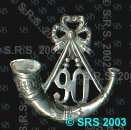
Posts : 10890
Join date : 2009-04-07
Age : 68
Location : Melbourne, Australia
 |  Subject: Capt . Hugh O'Donnell Subject: Capt . Hugh O'Donnell  Sat Apr 20, 2013 8:50 am Sat Apr 20, 2013 8:50 am | |
| From Mack & Shad . Lt O'Donnell joined the Batt in June and served with it to the conclusion of the war . Is entitled to the Medal with Clasp .
90th
Last edited by 90th on Mon Mar 23, 2020 5:16 pm; edited 1 time in total |
|   | | patchw
Posts : 1
Join date : 2020-03-22
 |  Subject: Re: Captain HUGH O'DONNELL. Subject: Re: Captain HUGH O'DONNELL.  Mon Mar 23, 2020 1:49 pm Mon Mar 23, 2020 1:49 pm | |
| I came across this thread while doing some family research and although it's pretty old I wondered if the members might enjoy some family information and pictures. I have attached Hugh's medals which I display proudly at home along with a couple of pictures of the man. My grandmother told me (Hugh's brothers daughter) that the map he produced was on enemy movements however I have never managed to find anything to back that up. [You must be registered and logged in to see this image.] |
|   | | 90th

Posts : 10890
Join date : 2009-04-07
Age : 68
Location : Melbourne, Australia
 |  Subject: Capt Hugh O'Donnell Subject: Capt Hugh O'Donnell  Mon Mar 23, 2020 5:17 pm Mon Mar 23, 2020 5:17 pm | |
| Hi Patchw Thanks for sharing the pics , much appreciated . 90th  |
|   | | 1879graves
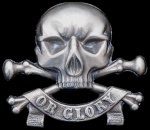
Posts : 3379
Join date : 2009-03-03
Location : Devon
 |  Subject: Re: Captain HUGH O'DONNELL. Subject: Re: Captain HUGH O'DONNELL.  Mon Mar 23, 2020 7:01 pm Mon Mar 23, 2020 7:01 pm | |
| Hi Patchw
Welcome to the forum and thank you for sharing your photographs and medals.
Andy |
|   | | WeekendWarrior
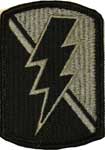
Posts : 270
Join date : 2017-07-21
Location : San Diego, CA
 |  Subject: Re: Captain HUGH O'DONNELL. Subject: Re: Captain HUGH O'DONNELL.  Fri Apr 16, 2021 7:32 pm Fri Apr 16, 2021 7:32 pm | |
| I've come across an additional reference to O'Donnell's map in the Blue Books, under C2676 (a hearty thanks to Julian Whybra for suggesting I take a glance at it).
O'Donnell allegedly compiled a map showing the routes of all of the fugitives down to the Buffalo. Could be an invaluable document if it ever shows up. |
|   | | gardner1879
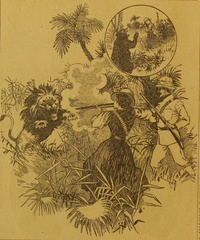
Posts : 3460
Join date : 2021-01-04
 |  Subject: Re: Captain HUGH O'DONNELL. Subject: Re: Captain HUGH O'DONNELL.  Thu Sep 29, 2022 3:20 pm Thu Sep 29, 2022 3:20 pm | |
| [You must be registered and logged in to see this image.] Evening Mail - Wednesday 26 December 1917 |
|   | | | | Captain HUGH O'DONNELL. |  |
|
Similar topics |  |
|
| | Permissions in this forum: | You cannot reply to topics in this forum
| |
| |
| |
